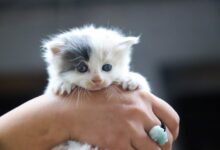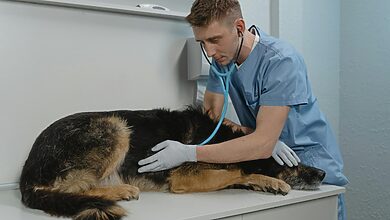Frog Care and Housing: A Ribbiting Guide to Happy Amphibians

Dive into the fascinating world of frog care and housing with this comprehensive guide. Whether you’re a first-time frog owner or a seasoned enthusiast, discover the keys to creating a comfortable and joyful habitat for your amphibious friends.
Choosing the Right Frog Species for Your Home:
Embark on the journey of selecting the perfect frog companion by exploring the diverse personalities and habitat preferences of various frog species. Learn how to choose a frog that aligns with your lifestyle and creates a harmonious living environment.
Frog Species Highlights:
- Tree Frogs: Arboreal wonders thriving in vertical setups.
- Aquatic Frogs: Water-loving companions perfect for aquatic habitats.
- Terrestrial Frogs: Ground-dwellers requiring spacious terrariums.
Creating a Frog-Friendly Habitat:
Delve into the art of habitat creation as you discover the essentials of tanks, substrates, and decorations. Uncover the secrets to replicating a natural environment that fosters your frogs’ well-being and encourages natural behaviors.
Habitat Design Elements:
- Enclosure Size and Type: Selecting the right tank for your frog’s species.
- Substrate Choices: Optimal substrates for various frog habitats.
- Decor and Hiding Places: Creating a visually appealing and functional frog haven.
Temperature, Lighting, and Humidity:
Achieve microclimate mastery as you explore the critical factors of temperature, lighting, and humidity in frog care. Learn how to create a balanced environment that mirrors the conditions of your frog’s native habitat, ensuring their health and happiness.
Microclimate Management:
- Temperature Requirements: Maintaining optimal warmth for your frog.
- Lighting Essentials: Providing suitable light conditions for day and night.
- Humidity Control: Balancing moisture levels to mimic natural habitats.
Feeding Frogs: From Insects to Specialty Diets
Embark on a culinary adventure as you discover the diverse palates and nutritional needs of pet frogs. Explore the world of insect-based diets, specialty foods, and supplementation strategies to keep your frogs healthy and thriving.
Froggy Dining Tips:
- Insect Options: Locusts, crickets, and other live prey choices.
- Specialty Diets: Exploring commercial frog foods and supplements.
- Feeding Schedule: Establishing a consistent and balanced feeding routine.
Handling and Enrichment:
Unlock the secrets to handling your frog with care, building trust, and providing enrichment activities that stimulate their minds. Explore ways to interact with your frogs while respecting their natural behaviors and ensuring a stress-free living experience.
Frog Interaction Guidelines:
- Handling Techniques: Approaches for minimizing stress during handling.
- Enrichment Activities: Creating a dynamic environment for mental stimulation.
- Observation and Bonding: Building a connection through mindful observation.
Health Monitoring and Common Issues:
Become a vigilant frog caregiver by learning how to monitor your amphibian friends’ health and recognize common issues. Equip yourself with preventive care strategies to ensure the longevity and well-being of your cherished frogs.
Frog Health Indicators:
- Physical Observations: Signs of a healthy frog and potential red flags.
- Common Health Issues: Addressing concerns like skin conditions and infections.
- Veterinary Care: Knowing when to seek professional assistance.
Frog-Safe Cleaning Practices:
Delve into the art of maintaining a pristine frog habitat through frog-safe cleaning practices. Discover effective strategies for substrate cleaning, tank sanitation, and creating a hygiene routine that ensures your frogs live in a clean and comfortable environment.
Cleaning Protocols:
- Substrate Cleaning: Maintaining a fresh and odor-free substrate.
- Tank Sanitation: Establishing a routine for overall habitat cleanliness.
- Hygiene Products: Choosing safe cleaning solutions for frog habitats.
Amphibious Socializing:
Explore the social aspects of frog ownership as you learn about introducing multiple frogs into a shared habitat. Uncover the intricacies of community dynamics, ensuring compatibility, and fostering froggy friendships that enhance their quality of life.
Froggy Social Guidelines:
- Species Compatibility: Matching frogs with similar needs and behaviors.
- Territorial Considerations: Creating ample space for cohabitation.
- Observing Interactions: Monitoring social dynamics and ensuring a harmonious environment.
Breeding Frogs:
Embark on a fascinating journey into the world of frog reproduction, from courtship rituals to tadpole development. Explore the marvels of amphibian parenthood, gaining insights into the unique stages of frog breeding.
Frog Reproduction Phases:
- Courtship Rituals: Observing mating behaviors and signals.
- Egg Laying and Development: Tracking the stages of tadpole growth.
- Tadpole Care: Providing optimal conditions for tadpole development.
Conservation and Responsible Ownership:
Conclude your frog care and housing journey by embracing the principles of conservation and responsible ownership. Discover how you can contribute to amphibian welfare, advocate for conservation efforts, and play a pivotal role in preserving the habitats of these remarkable creatures.
Conservation Initiatives:
- Supporting Conservation Organizations: Contributing to frog preservation initiatives.
- Responsible Ownership Practices: Adopting ethical and environmentally conscious frog care habits.
- Educational Outreach: Spreading awareness about the importance of frog conservation.
Frog Care and Housing:
Conclude your frog care and housing journey by celebrating the unique joys of frog ownership. Whether you’re a seasoned frog enthusiast or a curious beginner, this guide equips you with the knowledge and compassion needed to nurture the ribbiting joy of frog companionship.
FAQs: Frog Care and Housing
Q1: Can frogs be potty trained, or do they require a water environment for waste elimination?
A1: Frogs typically release waste in the water, and their aquatic habitat assists in waste elimination.
Q2: Do frogs require vaccinations or regular veterinary checkups?
A2: Frogs do not require vaccinations, but regular veterinary checkups can help monitor their health and address any emerging concerns.
Q3: Are there any specific considerations for maintaining a habitat for aquatic frogs?
A3: Yes, maintaining clean water, proper filtration, and a suitable land-water ratio are crucial for the well-being of aquatic frogs.*
Q4: Can different species of frogs cohabitate in the same tank?
A4: While some species can cohabitate, it’s crucial to consider compatibility, size, and habitat preferences to prevent stress or aggression.
Q5: How long do pet frogs typically live?
A5: The lifespan of pet frogs varies by species, with some living up to 10-15 years or even longer with proper care.






